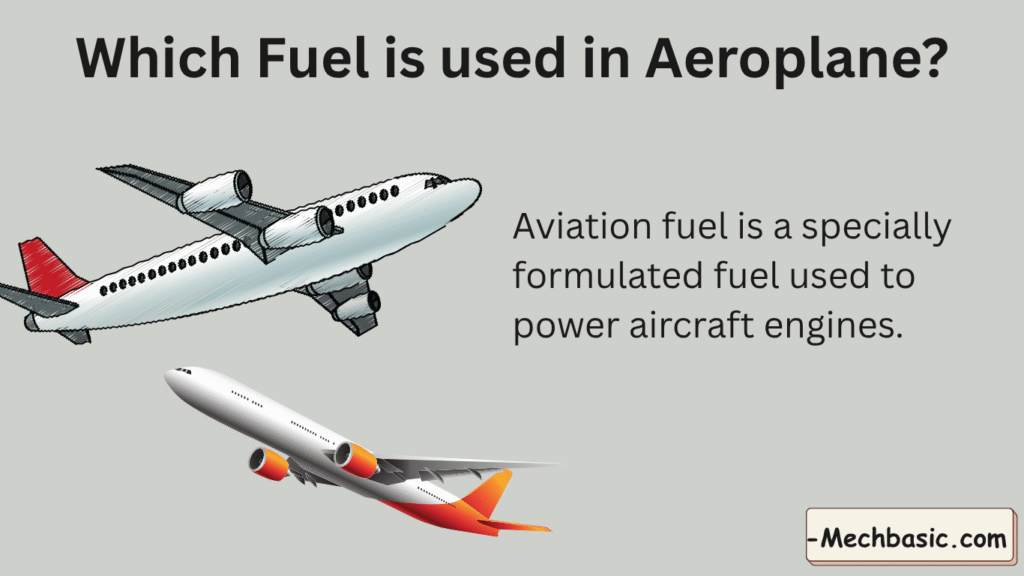Let’s go in detail about the types of fuel used in airplanes:

In this article:
1. Definition of Aviation Fuel
Aviation fuel is a specially formulated fuel used to power aircraft engines.
- It must provide high energy content, stability, and safety at extreme altitudes and temperatures.
- The type of fuel depends on the engine type: piston engines or jet engines.
2. Types of Aircraft Engines and Their Fuel
A. Piston Engines (Reciprocating Engines)
- Used in small propeller-driven aircraft.
- Fuel Type: Aviation gasoline (Avgas).
- Characteristics:
- High-octane petrol, usually 100LL (Low Lead) or 100/130
- Designed to prevent knocking at high compression ratios
- Stable at varying temperatures and pressures
Example Aircraft: Cessna 172, Piper PA-28
B. Jet Engines (Turbine Engines)
- Used in commercial airliners, military jets, and business jets.
- Fuel Type: Jet fuel (kerosene-based).
- Common Grades:
- Jet A / Jet A-1:
- Most widely used in commercial aviation
- Flash point: ~38°C
- Freezing point: Jet A-1 ~ −47°C (Jet A ~ −40°C)
- Kerosene-based, refined for clean combustion
- JP-8 / JP-5:
- Military jet fuels with additives for anti-icing, corrosion prevention, and stability
- Jet A / Jet A-1:
Example Aircraft: Boeing 747, Airbus A320, F-16 fighter
C. Turboprop Engines
- Use kerosene-based jet fuel (Jet A or Jet A-1).
- Combines features of propeller and jet propulsion.
Example Aircraft: ATR 72, Bombardier Q400
3. Key Properties of Aviation Fuel
| Property | Importance |
|---|---|
| High Energy Density | Provides sufficient thrust or lift |
| Low Freezing Point | Functions at high altitudes and cold temperatures |
| High Flash Point | Safety during storage and handling |
| Detergent & Anti-Corrosion Additives | Keeps engines clean and protects fuel system |
| Stable Combustion | Prevents knocking in piston engines and ensures smooth jet operation |
4. Difference Between Avgas and Jet Fuel
| Feature | Avgas | Jet Fuel |
|---|---|---|
| Engine Type | Piston engines | Jet / turbine engines |
| Base | High-octane petrol | Kerosene |
| Octane Rating | 100LL, 100/130 | N/A (cetane rating for military JP fuels) |
| Lead Content | Contains lead (low-lead 100LL) | Lead-free |
| Energy Density | Moderate | High |
| Freezing Point | Moderate | Very low (-47°C for Jet A-1) |
5. Summary
- Small piston aircraft: Use Avgas (aviation gasoline)
- Jet or turbine aircraft: Use Jet fuel (kerosene-based, Jet A, Jet A-1, JP-8)
- Aviation fuel is formulated for high energy, stability, safety, and cold-weather performance.
- Using incorrect fuel can cause engine failure or accidents, so fuel type is strictly regulated.
💡 Tip:
Jet fuel is similar to kerosene, while Avgas is high-octane petrol with additives. Commercial airliners almost exclusively use Jet A or Jet A-1.
Other courses:



